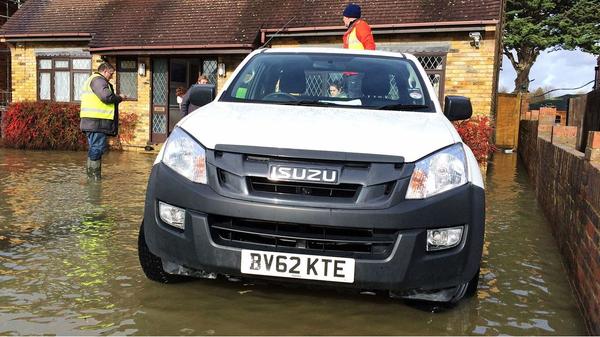Advice
Aquaplaning: what is it and how to prevent it
Aquaplaning is when you lose control of your car due to flooding. Here we look at how you can avoid your car from aquaplaning.


Words by: Nimisha Jain

Additional words by: Dan Trent
Published on 1 January 2024 | 0 min read
What is aquaplaning?
Aquaplaning, also known as hydroplaning, is when a layer of water builds up between a vehicle’s tyres and the surface of the road. This loss of contact can result in a sudden reduction of grip and control, given the driver may not be able to steer, accelerate or brake.
If you're unlucky this loss of control can end in a crash but, even if it doesn't, it can be a pretty scary experience, and one that's more likely to occur over winter months in poor weather.
If you're unlucky this loss of control can end in a crash but, even if it doesn't, it can be a pretty scary experience, and one that's more likely to occur over winter months in poor weather.

What to do when I’m aquaplaning?
If you're driving through standing water and your car engine becomes louder with an unexpected increase in revs, the steering feels lighter, or if the rear of your car drifts from side to side then there's a good chance you've experienced aquaplaning. Most modern cars feature some manner of stability control these days and you may feel (or hear) this grabbing the brakes as it attempts to straighten the car, or see a flickering warning light (usually yellow) on the dashboard to alert you it's working.
While it's easier than it sounds the first thing to do in this situation is to stay calm. It may feel like you’re losing control of your car and it's a natural instinct to try and do something about it by braking or steering suddenly, but this can make things worse. In this situation, you need to slow down progressively and take back control of the car once it has cleared the patch of water and the tyres are in contact with the road surface again. To do this, try easing off the accelerator to slow down, and hold the steering wheel straight with a light grip as your car’s tyres reconnect with the road. When you finally feel you’re getting your car back in control, gently brake to slow down the car. While modern systems are a lot better thanks to integration with stability control and other safety aids cruise control can sometimes exacerbate an aquaplaning situation, so it's better to switch it off in really wet conditions. It also goes without saying you should allow more space between you and the cars in front and to your sides so you if you do aquaplane you have room to regain control and slow before hitting anyone. Keeping your distance also helps you anticipate any large patches of deeper water, especially in motorway driving. For instance, if the spray kicked up by the car in front suddenly gets more intense that means there's more surface water and, potentially, an increased risk of aquaplaning. By hanging back you can reduce your speed by lifting off the throttle rather than on the brakes, reducing the risk of losing control.
While it's easier than it sounds the first thing to do in this situation is to stay calm. It may feel like you’re losing control of your car and it's a natural instinct to try and do something about it by braking or steering suddenly, but this can make things worse. In this situation, you need to slow down progressively and take back control of the car once it has cleared the patch of water and the tyres are in contact with the road surface again. To do this, try easing off the accelerator to slow down, and hold the steering wheel straight with a light grip as your car’s tyres reconnect with the road. When you finally feel you’re getting your car back in control, gently brake to slow down the car. While modern systems are a lot better thanks to integration with stability control and other safety aids cruise control can sometimes exacerbate an aquaplaning situation, so it's better to switch it off in really wet conditions. It also goes without saying you should allow more space between you and the cars in front and to your sides so you if you do aquaplane you have room to regain control and slow before hitting anyone. Keeping your distance also helps you anticipate any large patches of deeper water, especially in motorway driving. For instance, if the spray kicked up by the car in front suddenly gets more intense that means there's more surface water and, potentially, an increased risk of aquaplaning. By hanging back you can reduce your speed by lifting off the throttle rather than on the brakes, reducing the risk of losing control.
Tips on how to prevent aquaplaning
Driving style
• Do not drive fast in bad weather as it can be more difficult to control your car on slippery roads • Avoid sudden braking as it can cause your tyres to lock and make the car skid, making it harder for your car to regain grip • Usually water collects more on the side of the roads than in the centre so, where safe to do so, try staying closer to the 'crown' of the road where there's less standing water and avoid driving through big puddles where possible